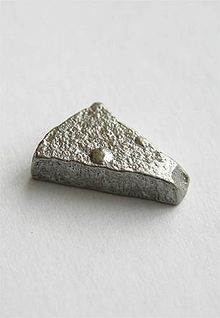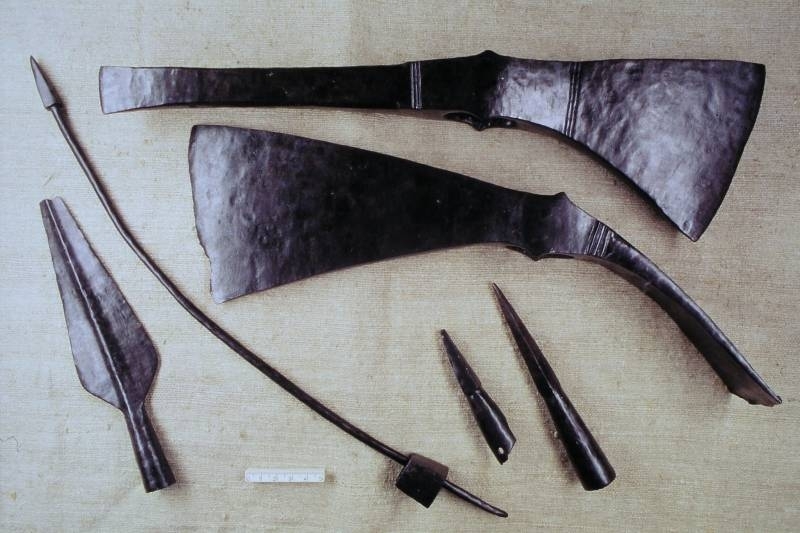Iron is a chemical element with the symbol Fe and atomic number 26. It is a metal with a silvery-gray appearance and a density of 7.87 grams per cubic centimeter. It is the fourth most abundant element in the Earth’s crust and one of the most useful metals in human history. Iron has been used by humans for thousands of years, dating back to prehistoric times. In this article, we will explore the history of iron, its discovery, development, and use throughout human history.
Discovery and Early Use of Iron
Iron has been known and used by humans for thousands of years, dating back to prehistoric times. The earliest evidence of iron use comes from artifacts found in Egypt and Mesopotamia, dating back to around 4000 BC. These artifacts include iron beads, daggers, and other tools.
The use of iron in ancient times was limited due to the difficulty of extracting it from its ores. Iron occurs in nature mainly in the form of oxides, such as hematite and magnetite. Extracting iron from its ores requires a complex process that involves heating the ore with charcoal to reduce the iron oxide to iron metal. This process, known as smelting, was not developed until much later in human history.
The earliest known iron smelting furnaces were developed in the Near East around 1500 BC. These furnaces were small, and the iron produced was of low quality. Iron production did not become widespread until the Iron Age, which began around 1200 BC and lasted until the 6th century BC.
The Iron Age
The Iron Age is a period in human history characterized by the widespread use of iron tools and weapons. It began in the Near East around 1200 BC and spread to Europe and Asia over the next several centuries.
The Iron Age was a significant period in human history because it marked the transition from the use of bronze to iron for tools and weapons. Iron was much more abundant than copper and tin, the primary metals used to make bronze. Iron was also stronger and more durable than bronze, making it a more useful material for tools and weapons.
Iron tools and weapons enabled people to clear forests, cultivate land, and build stronger structures. Iron weapons were also more effective than bronze weapons, leading to significant changes in warfare and military tactics.
Iron in Ancient Civilizations
Iron played a significant role in the development of ancient civilizations, including those of Egypt, Greece, and Rome. In ancient Egypt, iron was used to make weapons, tools, and agricultural implements. The Egyptians also used iron to make jewelry and other decorative objects.
In ancient Greece, iron was used to make weapons and tools, and it played an important role in the development of Greek civilization. The Greeks developed advanced ironworking techniques, including the use of bellows to increase the temperature of their furnaces.
In ancient Rome, iron was used to make weapons, tools, and building materials. The Romans developed advanced ironworking techniques, including the use of water-powered hammers and bellows to increase the temperature of their furnaces. Roman iron tools and weapons were known for their quality and durability, and many of them are still in use today.
Iron in the Middle Ages
During the Middle Ages, iron continued to be an essential material for tools, weapons, and building materials. Iron tools enabled people to clear forests, cultivate land, and build stronger structures. Iron weapons also played a significant role in warfare and military tactics.
The Middle Ages saw significant advances in ironworking techniques, including the development of the blast furnace. The blast furnace is a type of furnace that uses a continuous flow of air to increase the temperature of the furnace and reduce the iron oxide to iron metal. The blast furnace made it possible to produce large quantities of iron at a lower cost and with higher quality than earlier smelting methods.
Iron production in the Middle Ages was dominated by Europe and the Middle East. The most significant iron-producing regions were England, Sweden, and the Ruhr Valley in Germany. Iron was also produced in India and China, but on a smaller scale.
The Renaissance and Industrial Revolution
The Renaissance marked a period of significant change in Europe, including advances in science, technology, and the arts. Iron played a significant role in the Renaissance, as new ironworking techniques enabled the production of higher-quality iron products.
The Industrial Revolution marked a period of rapid industrialization and technological advancement in Europe and North America. Iron played a critical role in the Industrial Revolution, as it was used to make steam engines, trains, and other machines. Iron was also used to make new types of buildings, such as skyscrapers and bridges.
During the Industrial Revolution, iron production increased dramatically. New techniques, such as the Bessemer process and the open-hearth process, enabled the production of large quantities of high-quality steel. Steel became the dominant metal of the 20th century, replacing iron in many applications.
Modern Uses of Iron
Iron remains an essential metal in modern times, with many uses in various industries. The construction industry uses iron to make structural supports, beams, and framing. Iron is also used for reinforcing concrete and as a component in steel-reinforced concrete.
The manufacturing industry uses iron to make a wide range of products, including cars, ships, trains, machinery, and tools. Iron is also used to make pipes, wire, and other products that require strength and durability.
The transportation industry uses iron in the manufacturing of automobiles, trains, airplanes, and ships. It is used for parts such as engines, transmissions, and wheels.
The energy industry uses iron in the construction of wind turbines, which generate renewable energy. Iron is also used in the construction of nuclear power plants.
The medical industry uses iron in the production of MRI machines, which use iron to create images of the body’s internal organs and tissues. Iron is also an essential nutrient for the human body and is used to treat iron deficiency anemia.
Conclusion history of iron
Iron has played a significant role in human history, from its discovery and early use in prehistoric times to its essential role in modern industrial society. Iron has been used for tools, weapons, and building materials throughout human history and has enabled significant advances in technology, science, and industry. Iron continues to be an essential metal in modern times, with many uses in various industries.


